We spent our fourth day in the indigenous community of Santiago de Okola, on the shores of Lake Titicaca. After a weaving workshop in the morning, we were briefed on the community's agriculture, which is described below.
After the weaving workshop, we followed the Secretary General of the Agricultural Syndicate, Don Juan, to his home for an agricultural Q&A. I don't think he quite knew what he was getting in for. Bolivians - particularly the type of Bolivians we wanted to talk to - are suspicious of foreigners showing up and poking around their farms. And they are suspicious for a good reason, given the history of agricultural "aid" in Bolivia. Saying to a Bolivian, "Hi, I'm here to learn about your agriculture," is roughly like a thief showing up to someone's house and asking to see the jewelry. So, as tourists interested in food sovereignty and agriculture, the places where we could get into farms to meet indigenous people and learn about their agriculture tended to be eco-tourism operations. And my guess is that most of the tourists at these places aren't quite as ag-focused as us.
Don Juan began by setting out a number of locally grown grains and beans - several types of quinoa, cañawa, barley, oats, corn, and fava beans - and then he explained each one. There was some wild quinoa, as well as cultivated quinoa. Some of the grains were brought to their community by a foundation called PROINPA, an organization that promotes food sovereignty in Bolivia. Some of the quinoa is a variety with larger grains, referred to as "Royal Quinoa." Often, royal quinoa is produced in Bolivia but then exported to countries like the U.S. Other local varieties of quinoa have smaller grains.
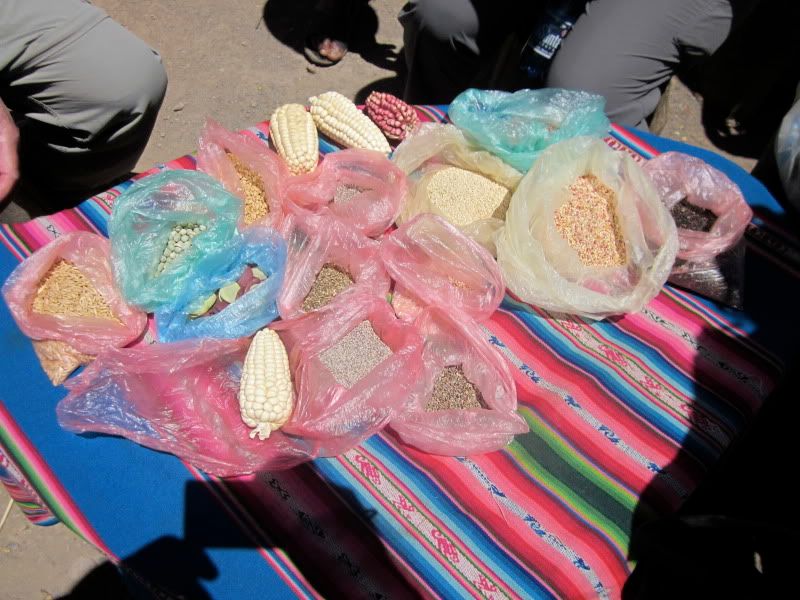
Locally grown foods
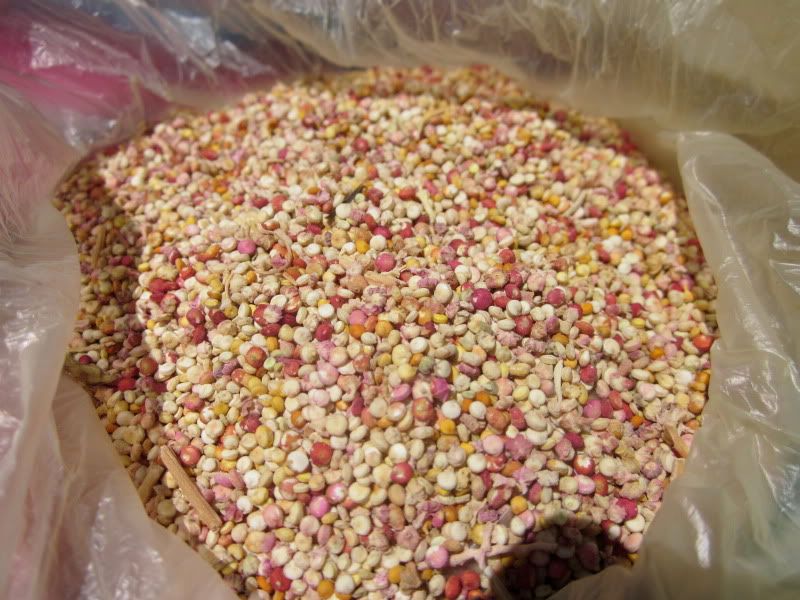
Locally grown royal quinoa
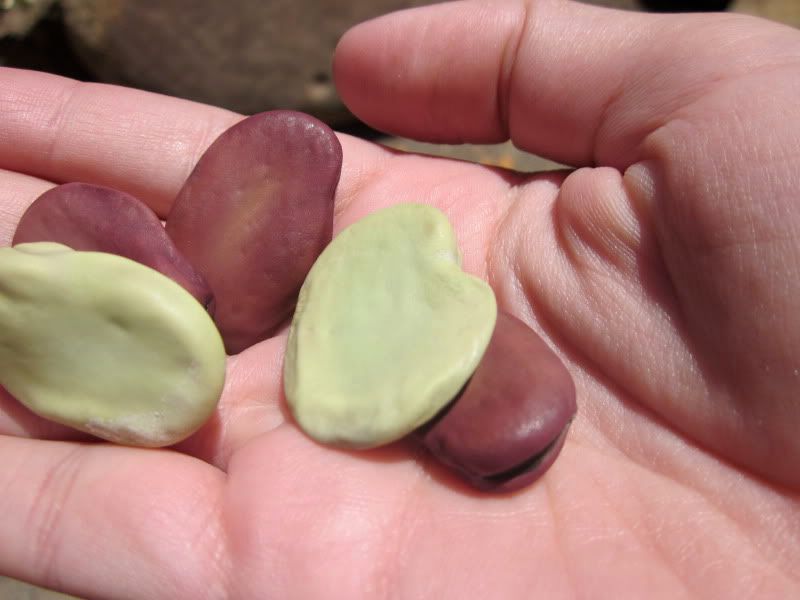
Fava beans
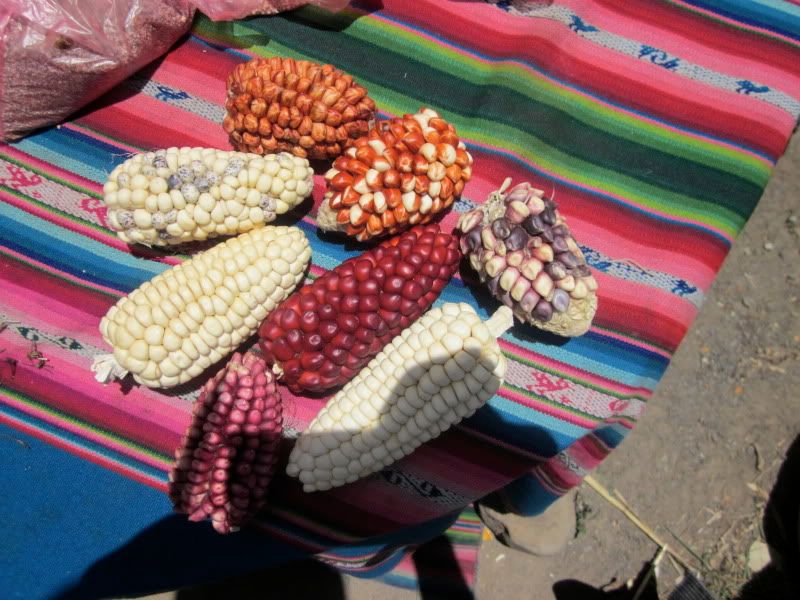
Local varieties of corn
We began by asking Don Juan about the history of agricultural aid to his community. He told us that pesticides and nitrogen fertilizer were originally introduced by foreign countries, namely (he apologized for having to say this) the United States, as well as Germany and Holland. Don Tomas, the current community leader, was even given a scholarship by USAID during the height of the Green Revolution, when he was sent to Mexico for agricultural training.
Initially, the chemicals cost less than they do now. Local farmers organized into a buying cooperative to access lower prices. However, over time the prices went up and - as the soil became degraded - they needed more and more chemicals just to produce the same results.
Today, Don Juan told us, the chemicals have killed the soil. It's dead, tired, and dry. There aren't very many worms anymore, and the frogs are now dead.
There are health consequences of pesticides too. The community now has cancer, particularly prostate cancer, and Type II diabetes, whereas it didn't before. Don Juan attributed these problems to processed food as well as agrochemicals, both of which entered the community over the same period of time. In the past, people ate more whole grains, but now people eat lots of white rice, pasta, and white bread. (As a side note: There are now efforts to reintroduce some of the more nutritious native grains with new recipes as well as processed food products like chocolate covered quinoa bars.)
Santiago de Okola has not had any deaths from acute pesticide poisoning, fortunately, but there was a case 15 years ago when a certain chemical concentrated in the eyes of the potatoes and made people who ate the potatoes throw up. He also mentioned that - according to legend - their ancestors lived 100 years or more, whereas today people do not live that long. And, as they've become more reliant on chemicals for their agriculture, they've also become more reliant on chemicals for medicine, he said.
During the Green Revolution, they also received new varieties of potatoes. The new potatoes were larger but also required more chemicals than their traditional varieties. Today, they are told by PROINPA (the foundation mentioned above) that the small potatoes are better than the big, Green Revolution potatoes. However, they still grow both the traditional varieties as well as the ones they received in the Green Revolution.
Today, the community of Santiago de Okola is trying to reduce or discontinue the use of agrochemicals. They still use some, but they like to feed organically grown food to the tourists who visit their community. It depends on each individual farmer, and whether that farmer is worried about the consequences of using agrochemicals or not. Don Juan feels that potatoes grown without chemicals taste sweeter and better to eat. With chemicals, he says, the potatoes taste bitter.
To prepare the soil, they wait until the rains begin. Then they use rented tractors to till the soil. They add sheep manure and algae from Lake Titicaca as inputs to give the soil fertility. They have also begun composting recently. Don Juan told us that they rotate crops as another way to manage pests and soil fertility, but they never leave their land fallow. The four-year rotation he described to us is a good one: potatoes, followed by fava beans, then oats, and then barley. Fava beans pump the soil full of nitrogen, which the oats and the barley use to grow. Potatoes do not require much nitrogen to grow. They grow 45-55 different varieties of potatoes, but of those, only 15 varieties are their staples.
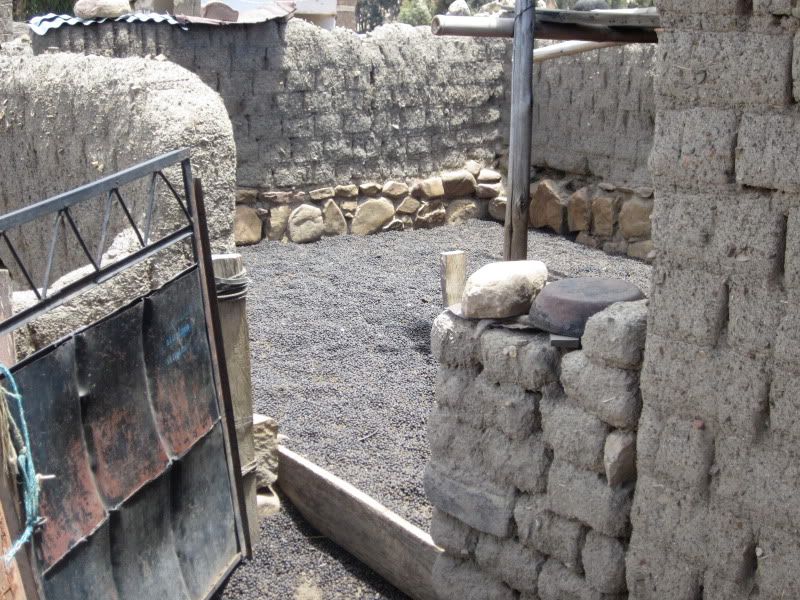
Lots and lots of fertilizer (sheep poop, which covers the ground)
In addition to the grains, they grow many types of vegetables - carrots, chard, turnips, onions, and more. And they've cataloged 65 different wild medicinal herbs that grow nearby. They also have plants that they use as natural pesticides. (He showed us one, a plant that is supposed to smell bad to insects. One member of our group commented "It smells good," to which someone else replied, "You're not an insect.")
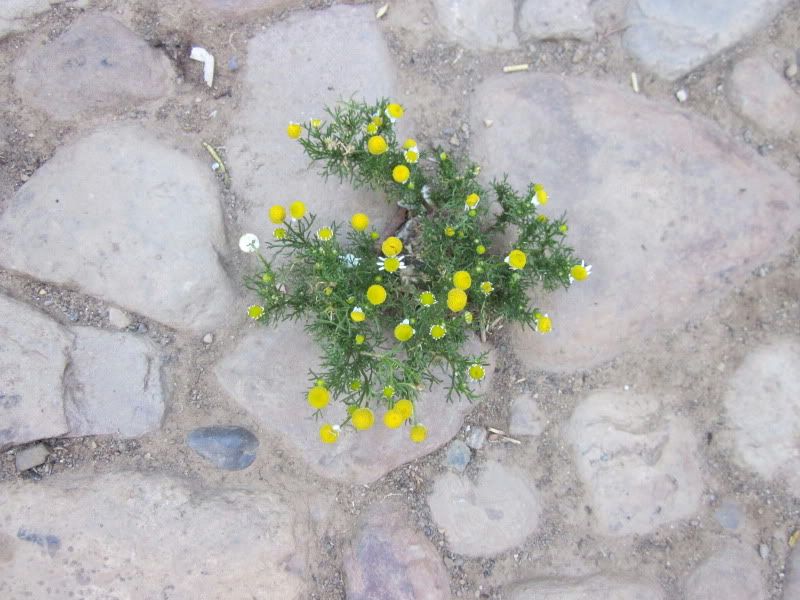
Chamomile, growing as a volunteer
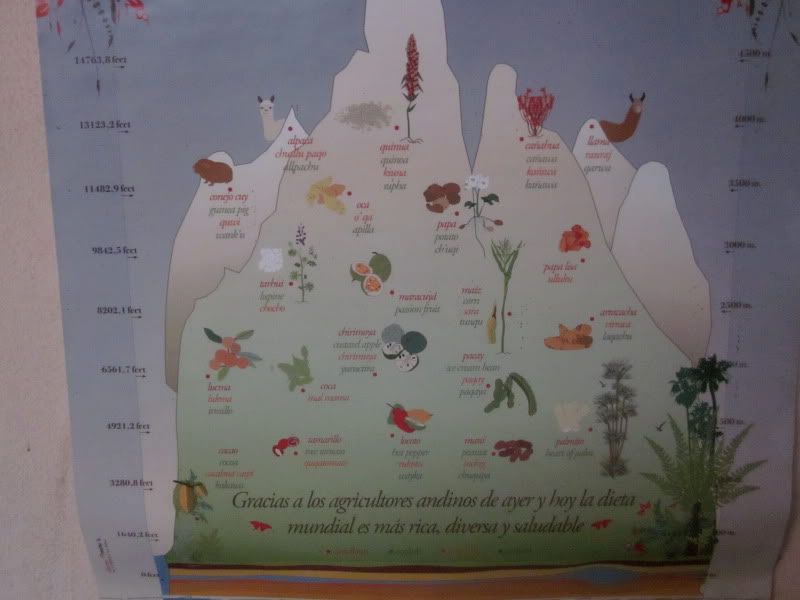
A poster of Andean crops and the altitudes where they grow
The Andean crops on the poster are (from top to bottom): quinoa, alpaca, llama, cañawa, guinea pig, potato, papa lisa (a tuber), oca, lucma (a fruit), tarwi (a bean from a lupine plant), ice cream bean (pacay), arracacha (a food that looks like a carrot), passion fruit, cherimoya, coca, corn, tamarillo (tree tomato), hot peppers, peanuts, heart of palm, and cacao. The crops toward the end of that list grow down in the Amazon basin and not up in the Andes in Santiago de Okola.
The people of Santiago de Okola have had running water for a few years now. The water comes from a mountain spring, and they are proud that it is very good water. The materials for the pipes that give them running water were provided by an organization called Care, and the community provided the labor. However, they do not have water for crop irrigation. All of their agriculture is entirely rain-fed and they want to find a way to irrigate. This year, the spring rains are late, and they are very worried. Don Juan said they had a flood last January, and he is afraid that will happen again.
While we were chatting, Don Juan's two pigs were in a field nearby, rooting around in the dirt. We asked what they were doing, and he said that they are rooting for potatoes left in the ground. That brought the conversation around to livestock.
Santiago de Okola also received Green Revolution "help" with livestock. Twenty years ago, Don Juan went to Lima, Peru to study veterinary science. He brought back a fast-growing breed of pig, one that required a high calorie diet of a pre-prepared mixed feed with high calorie grains, soy, and minerals. A few years ago, the people of Santiago de Okola ultimately abandoned these fast-growing pigs, switching back to their native "criollo" variety. The criollo pigs can survive by eating crop residue, food waste, and other locally produced foods.
He said that similar things happened for other livestock species (cows, sheep, and chickens). Don Juan said that all of the animals in Santiago de Okola are criollo, although there's a small percent of cows that are a breed brought in from elsewhere. While I was in Bolivia, I saw many Holstein cows (the most productive dairy breed) in the dairy producing regions of the Altiplano, but most chickens I saw were not any sort of recognizable breed. Don Juan also told us that his community is working to improve the genetics of their livestock ("mejorando poco a poco").
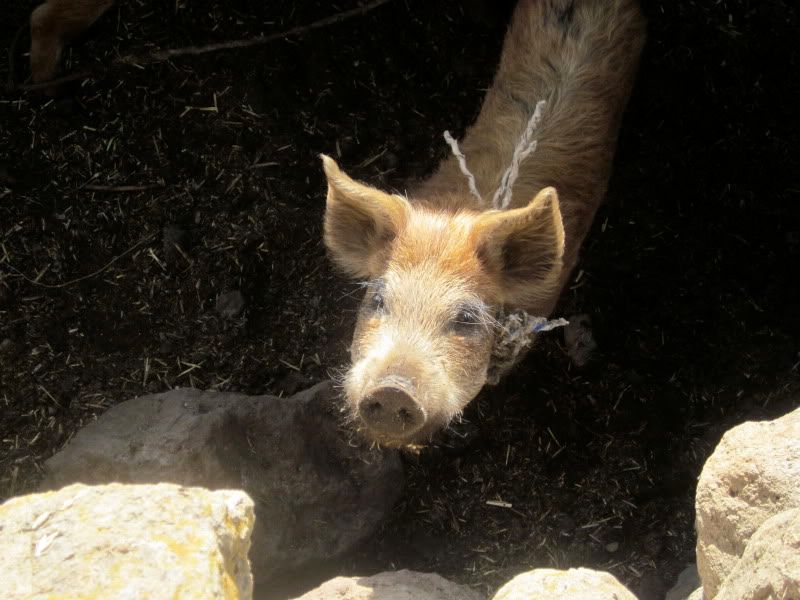
A local criollo variety of pigs
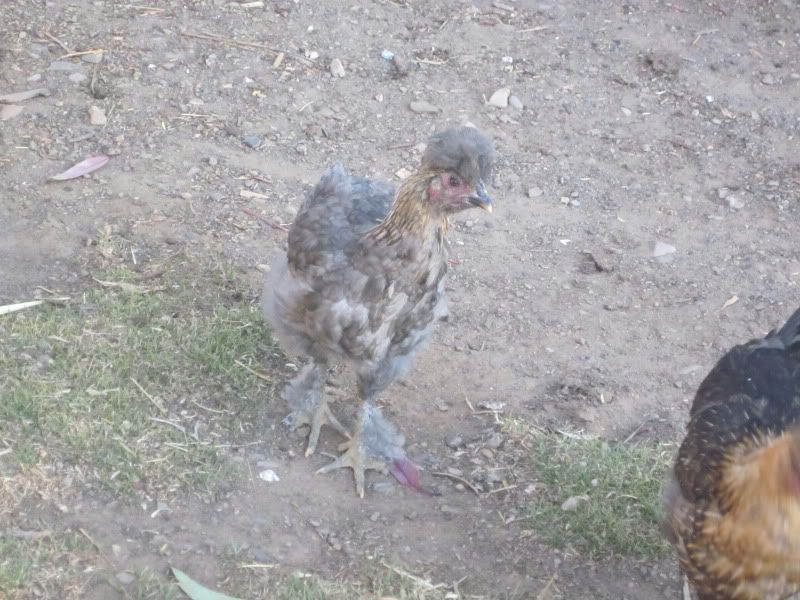
Chicken
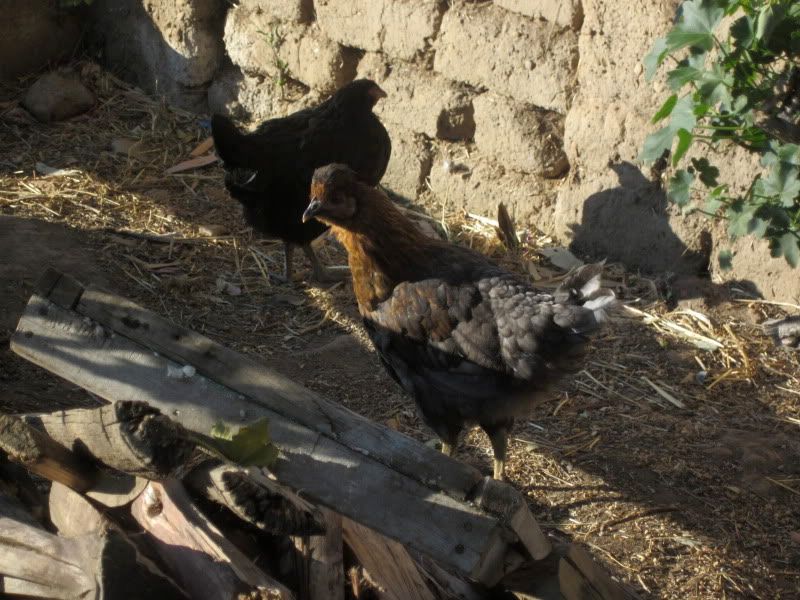
Chickens
As you can see, the people of Santiago de Okola are doing quite a bit to transition back to organic agriculture and to produce traditional, healthy, Andean foods. I asked some questions based on strategies I saw used in Cuba, and it seemed to me that Santiago de Okola could certainly do more in terms of identifying and cultivating beneficial insects or experimenting with intercropping (growing more than one crop together in the same space). In a way, it seems they are in the beginning stages of abandoning chemicals, and they are either using the same chemicals but less of them, or substituting organic inputs instead of chemicals, instead of truly adopting an agroecological approach. I don't want to underestimate what they have done though, because they are doing a wonderful job growing food in an incredibly harsh environment. Last, I'd be interested to see what would happen if they tried the raised field approach used by Tiahuanaco culture. And, of course, the wild card is the climate crisis, which is already having major effects on Bolivian agriculture.
No comments:
Post a Comment